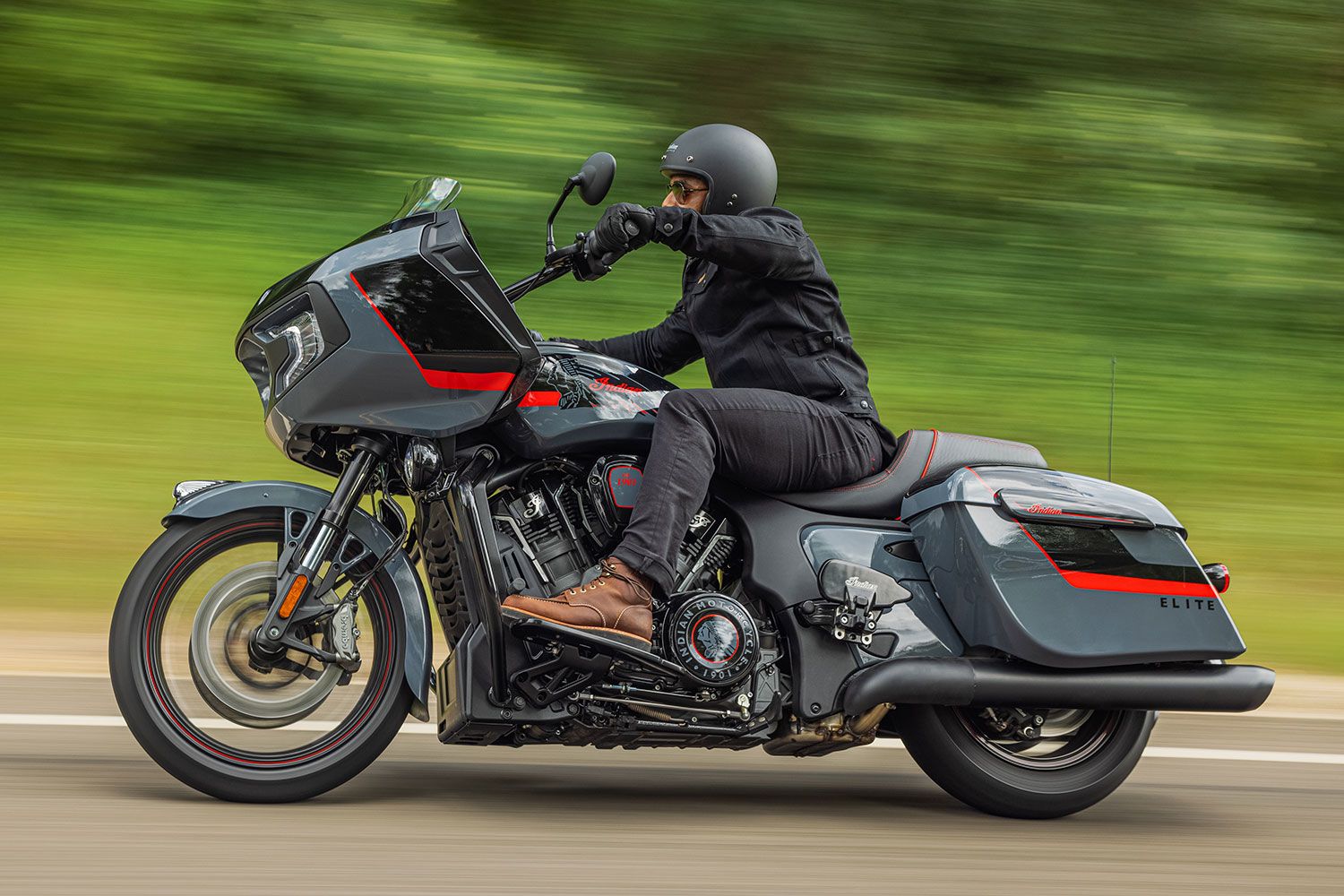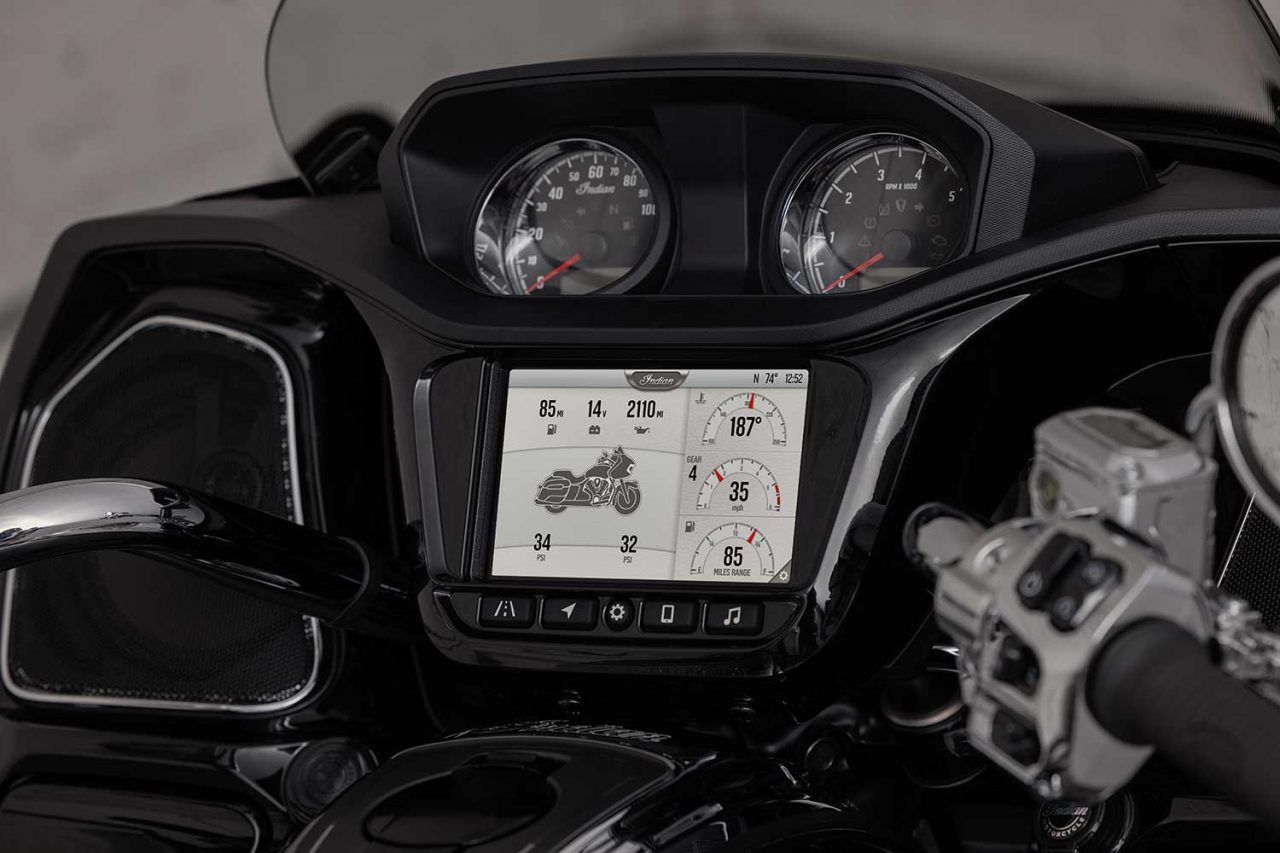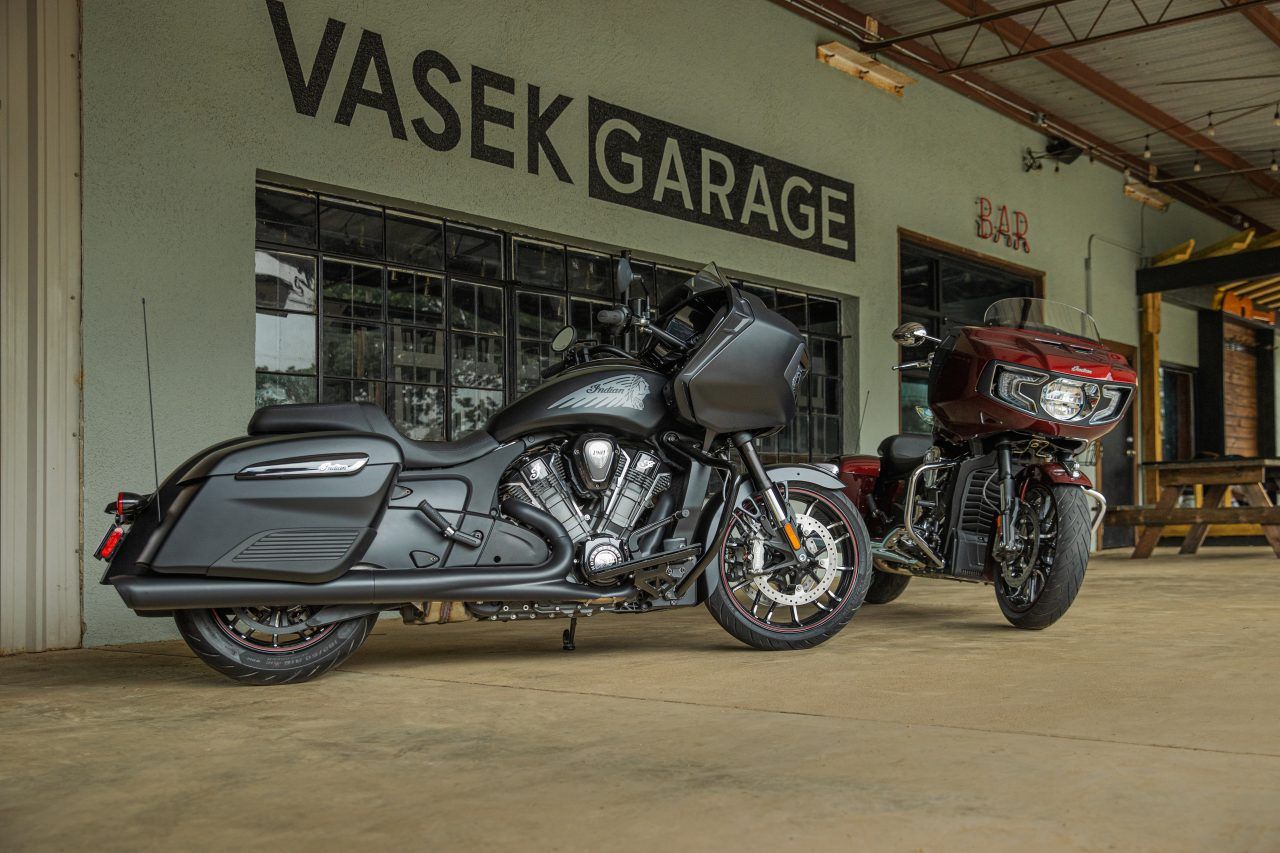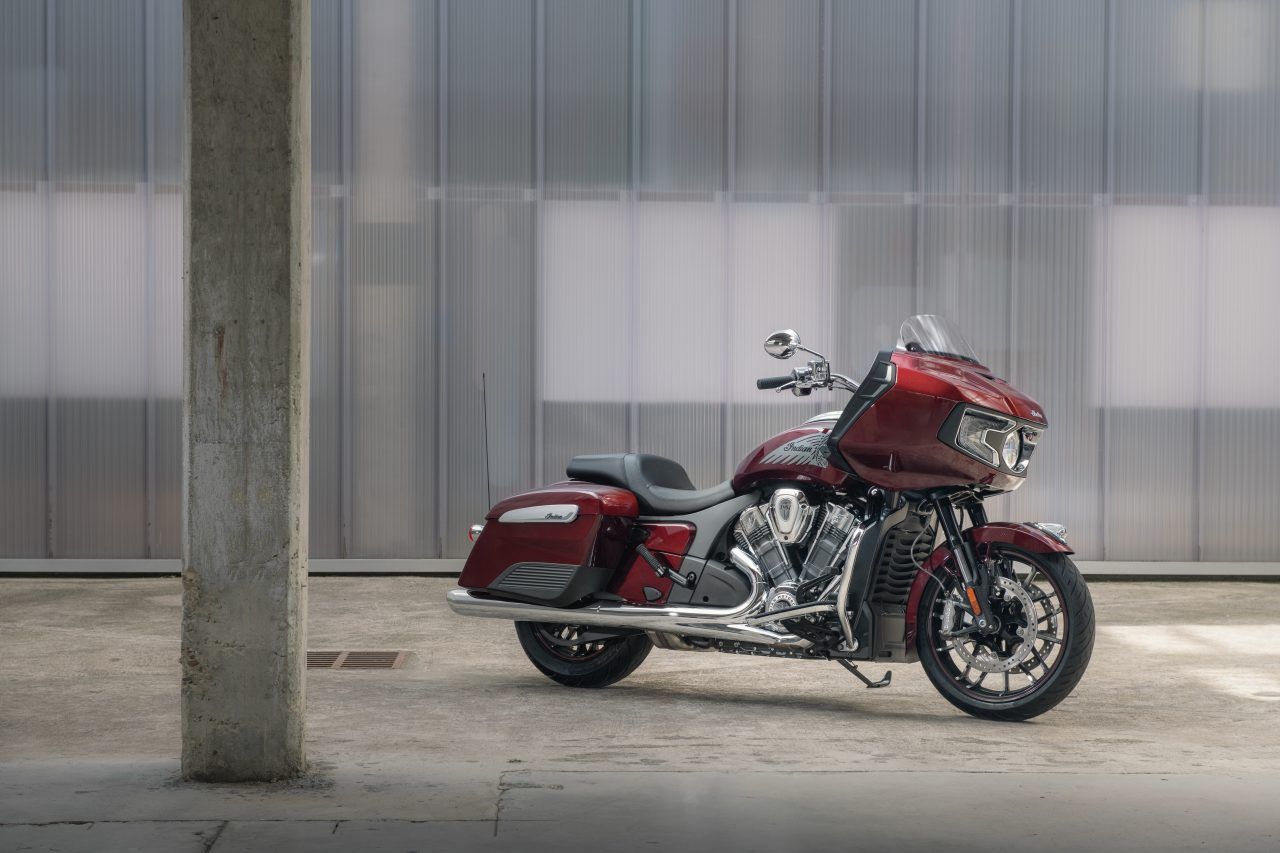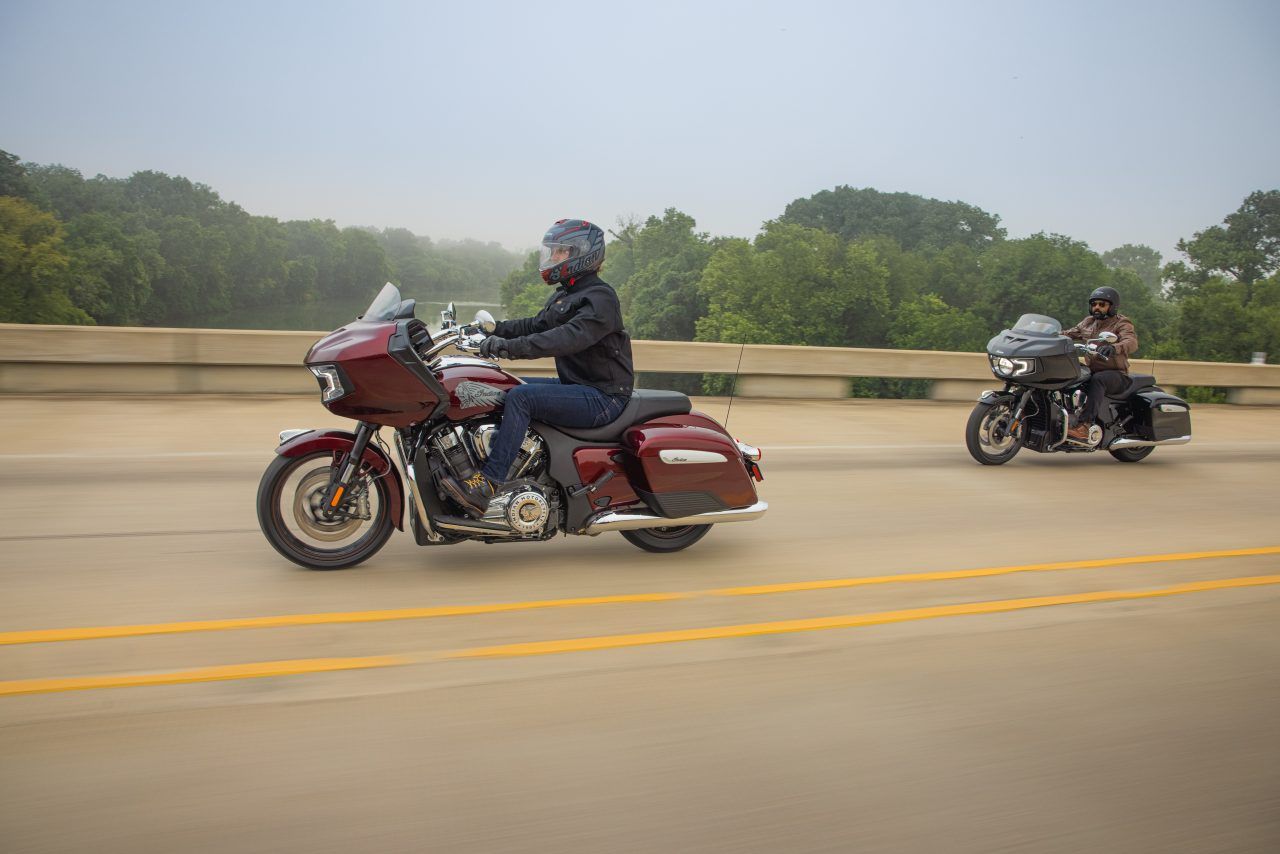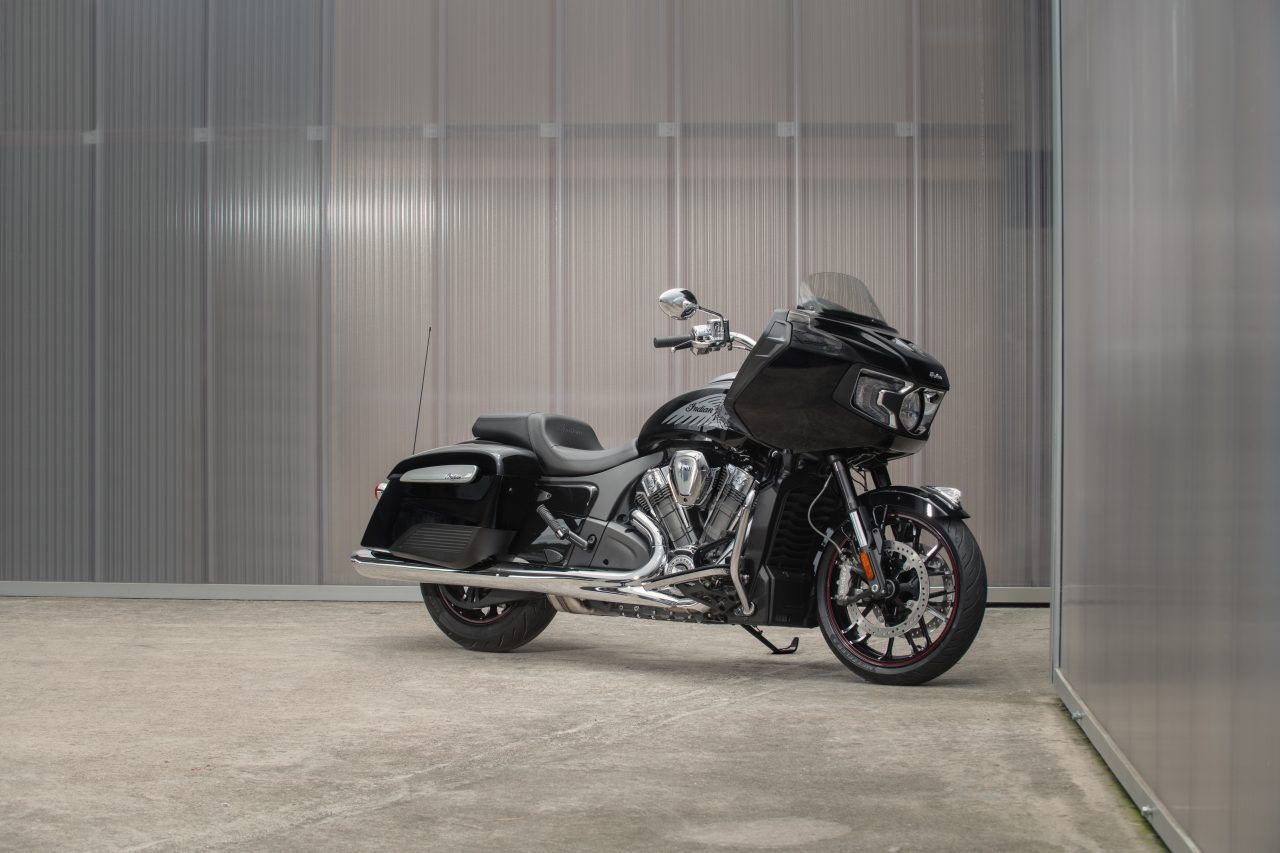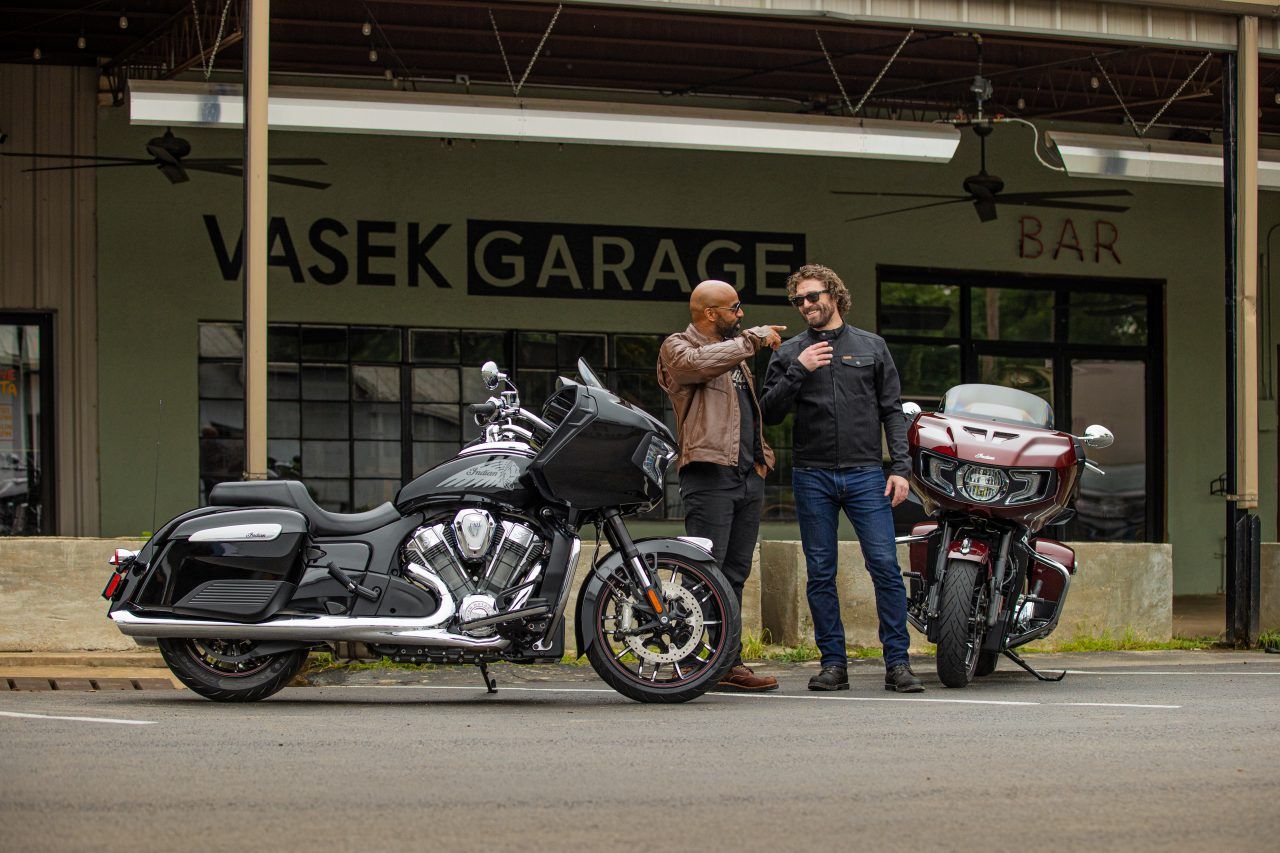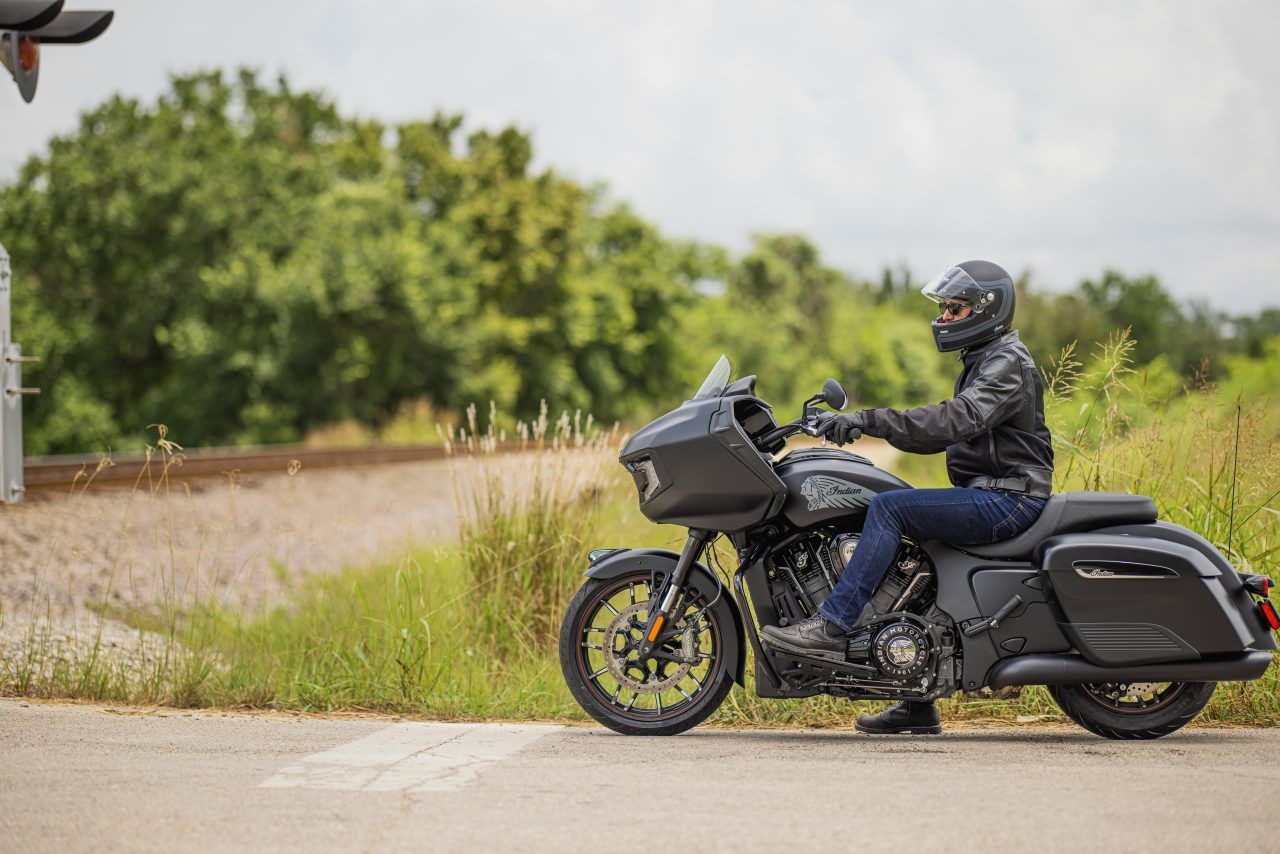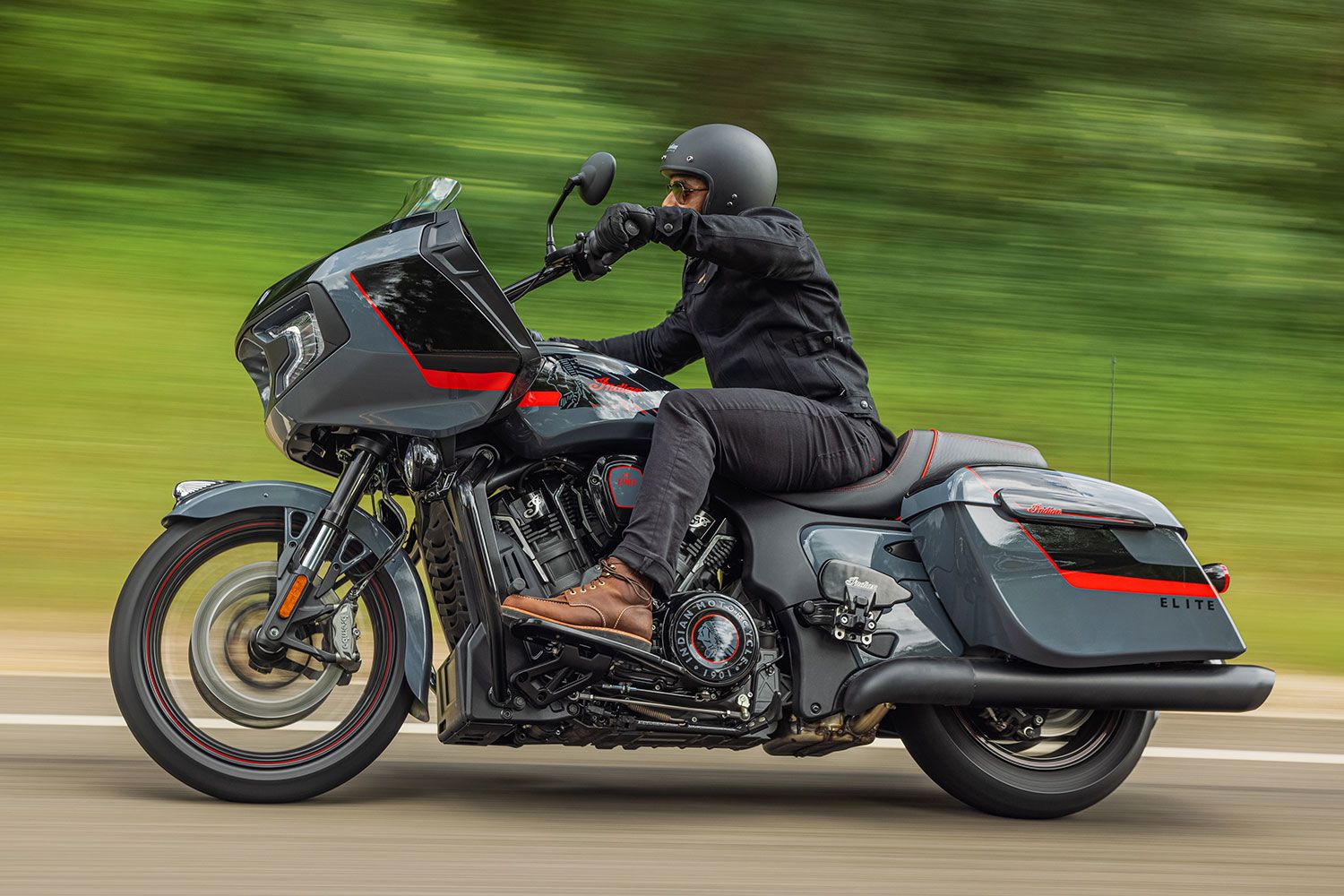When the Indian brand was re-launched by Polaris in 2013, the emphasis was very much on establishing a link between the original models and the new models. To that end, there was a distinct retro feel to models such as the Chieftain and Roadmaster models. With its bona fides established, Indian then looked forward instead of back, even if the models still had an authentic American air about them. The latest addition to the family, the Challenger, continues the modern direction started by the Scout and the FTR1200 and is the best Indian touring cruiser yet.
Engine
Of course, it’s a V-twin! What else could it be? What the PowerPlus engine also is, is brand new, from top to bottom. The previous Thunder Stroke engine will continue, but the two engines have little in common, other than their configuration. The water-cooled PowerPlus displaces 108 cubic inches, which is smaller than the Thunder Stroke’s 116 cubic inches, but the PowerPlus puts out slightly more torque at 128 pound-feet, compared to the Thunder Stroke's 126 pound-feet. However, it needs more revs to do it: 3,800rpm against 2,900rpm. Indian quotes 122 horsepower for the PowerPlus. The PowerPlus is an overhead camshaft design, with four valves per cylinder, compared to pushrods and two valves on the Thunder Stroke. It also revs much more freely, thanks to the over-square dimensions of the bore and stroke.
Electronics
Three riding modes are predictably named Sport, Standard, and Rain and the only drawback is that they have to be accessed via the TFT dash and not through a switch on the ‘bars. There’s an internal measurement unit (IMU) that enables lean-sensitive traction control and ABS, which is definitely a plus on such a large and heavy bike. Talking of weight, 839 pounds (wet) is not light, but is perfectly acceptable for a bike in this class. As with other cruiser models, the weight is worn low down and doesn’t affect handling once on the move, although the Challenger is a big beast to push around.
Chassis
The frame is composed of cast aluminum and looks massive, maybe because it is! But, it is also light for its strength. It actually has its roots in the Victory Ignition Concept motorcycle seen in 2015, which is no surprise as Polaris owned the Victory brand before it bought the Indian name. Victory was a thoroughly modern brand, in both engineering and appearance and Polaris has pulled a clever move by importing technology from Victory to form the new generation of Indian motorcycles. The stiffness of the frame and the chosen geometry gives the Challenger impeccable handling manners. Even piling into a fast corner fails to ruffle the bike’s feathers, and it will track round perfectly accurately.
Fairing
The Chieftain line has fork-mounted fairings so the Challenger gets a frame-mounted fairing. This has the benefit of taking the weight of the fairing off the forks and steering, providing a sharper-steering motorcycle which, combined with the new engine, makes the Challenger more of a sporting touring bike. The fairing contains the TFT dash, speakers for the entertainment system, and twin analog dials for speed and revs. Indian has managed to make the whole cockpit sleek and uncluttered, in keeping with its modern lines. There is a clear screen on the top edge of the fairing which is electrically adjustable over a three-inch height range. Wind deflectors are fitted to the side of the fairing which works reasonably well.
Brakes
Unusually for a cruiser, Indian doesn’t hide the fact that Brembo supplies the braking equipment. Twin 320mm discs up front are massively strong but, again in line with most cruisers, the back brake is also hugely efficient, doing a good job of hauling off speed when the need arises. The brakes are not linked, but the feel at the hand lever and foot pedal are spot on, and it’s possible to modulate braking force extremely easily.
Suspension
Cruisers aren’t known for their sophisticated suspension set-ups with little or no adjustment beyond preload for the rear shock. Maybe. The thinking is that, with that much weight to cope with, the last thing the factory needs is for owners to be messing with a set-up that has been carefully calibrated by the factory and suspension supplier. The suspension on the Challenger has no issues: it soaks up road irregularities with aplomb but never feels mushy or wallowy in any type of corner. To control this much weight and still give a dynamic ride is impressive. Similarly, there is absolutely no flex in the forks, making it easy to place the Challenger precisely in the corners.
Tires
Metzeler developed Cruisetec tires, especially for this type of application, and they work brilliantly on the Challenger. They are eerily resistant to following longitudinal grooves in the road surface, which only adds to the confident feeling when riding the Indian. The ground clearance on the Challenger is very good for a cruiser-type motorcycle, which only encourages more spirited cornering and the tires never felt anything other than up to the job, providing stable and safe-feeling grip even at faster speeds.
Sound System
Sound system set-ups are an acquired taste on these big cruisers. More often than not, you simply can’t hear them properly which is why so many riders wear headphones inside their helmets for clarity and sound quality. But, the system on the Challenger is pretty good, although still reliant on prevailing wind conditions to be heard properly. The system can be upgraded through the options list to make everything louder, but our experience is that that is all it will do - make it louder without necessarily improving the sound quality. The Powerband Audio Plus option adds speakers to the saddlebag's leading edges.
Three Models to Choose From
Four Challenger models are available: the standard model, the Dark Horse model, the Elite, and the Limited. The Dark Horse and Limited get the Bosch IMU that works with traction control and ABS, as well as a more sophisticated infotainment system. The Limited comes complete with high-end finishes, highway bars and speakers mounted in the saddlebags as standard. The Elite adds even fancier paintwork.
Pricing
The base Challenger costs $24,499, which is reasonable for a fully modern and well-equipped cruiser. The Dark Horse will cost you $28,999, and the Limited $27,999. The Elite, with its super-fancy custom paint jobs, starts at $34,999.
FAQ
Q: How much horsepower does an Indian Challenger make?
The Indian Challenger’s 108cu.in. engine produces 122 horsepower and 128 pound-feet of torque
Q: Is the Indian Challenger fast?
For a heavy cruiser, yes, the Indian Challenger is fast. It goes up to 125mph.
Q: Is the Indian Pursuit a Challenger?
Yes, the Pursuit is a full touring version of the Indian Challenger
Q: Where is the Indian Challenger made?
Indian Challengers are made in the Indian factory in Spirit Lake, Iowa

